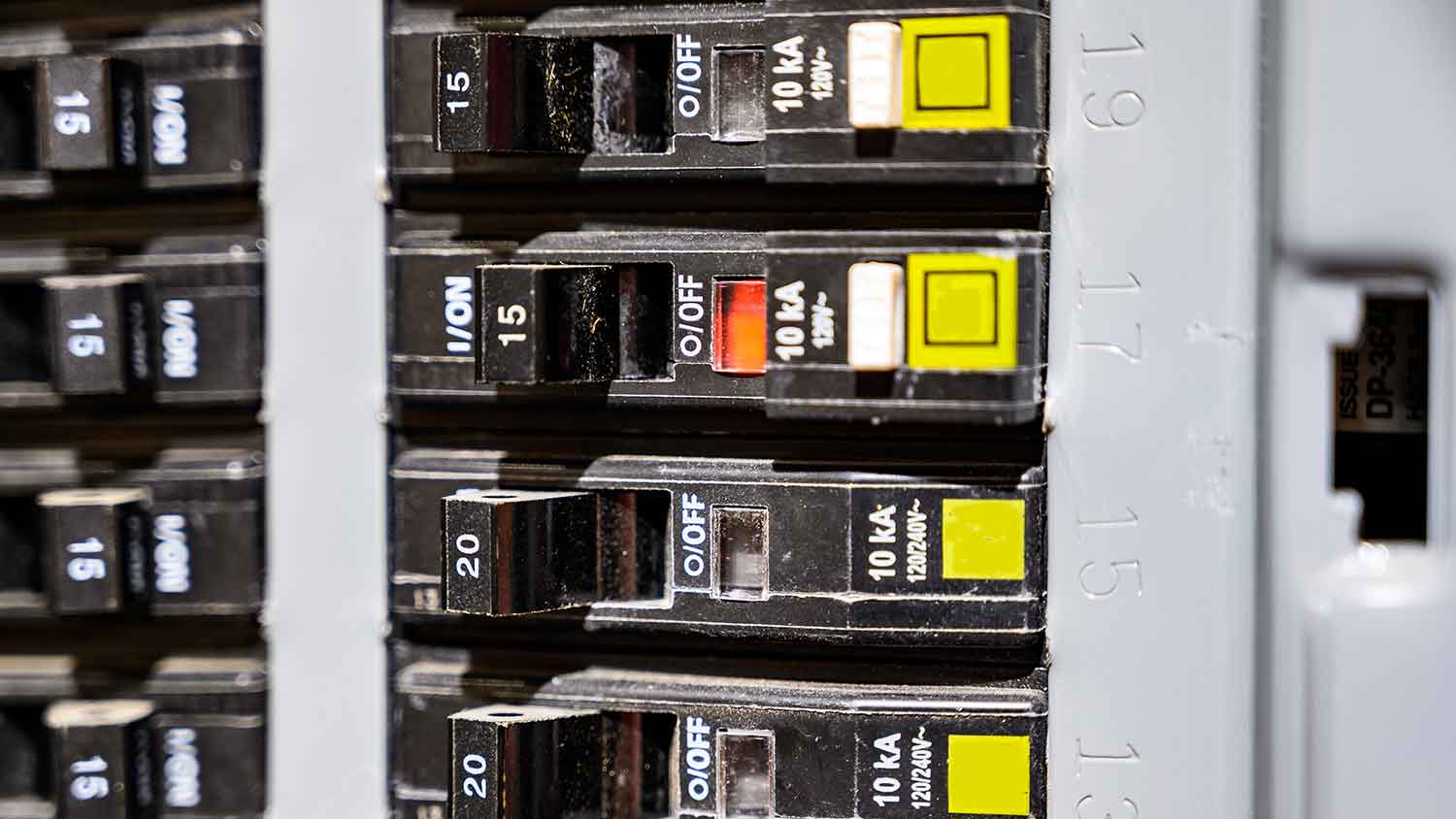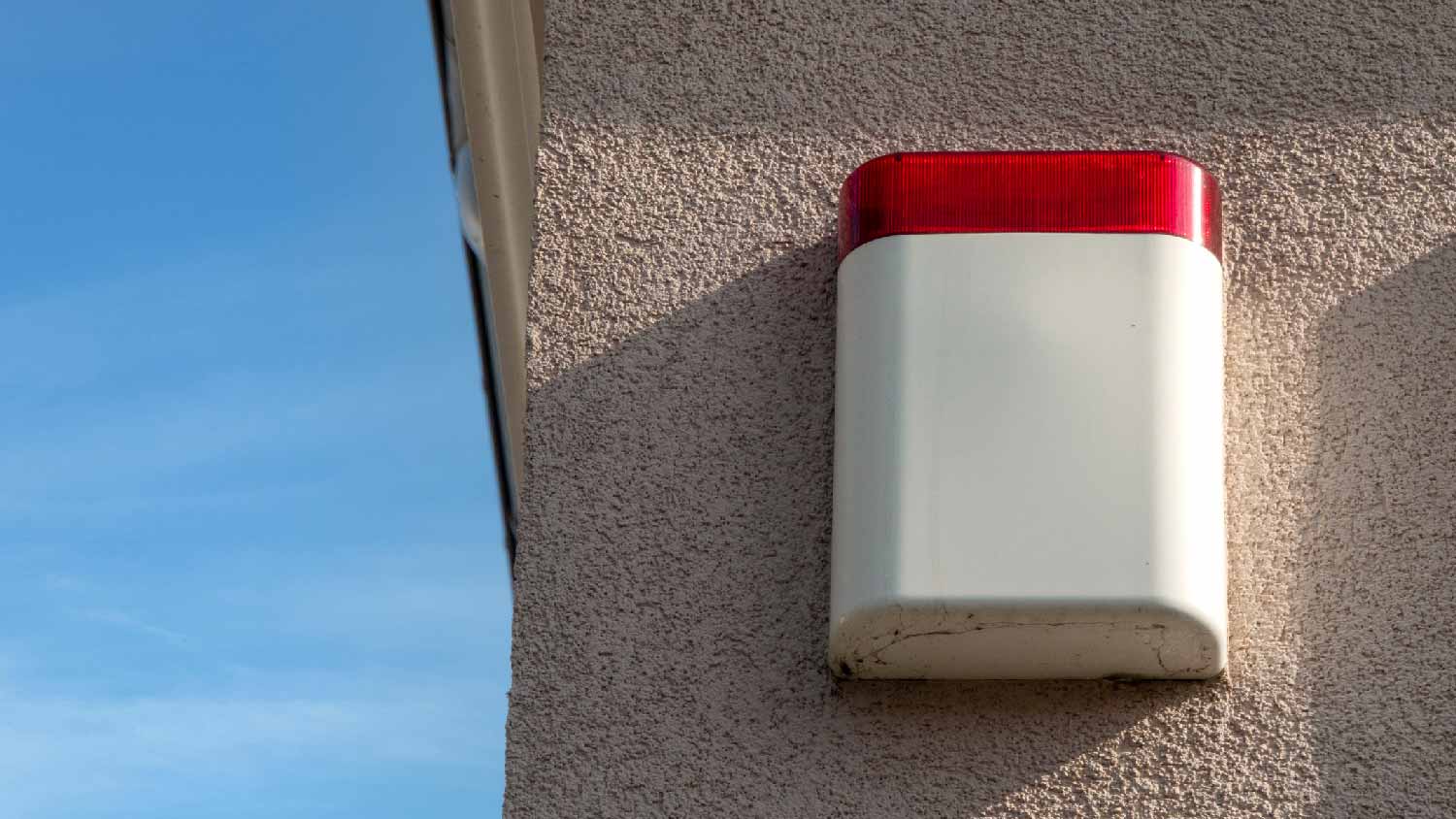
A GFCI outlet can keep your family safe and is relatively inexpensive to install. Learn how much replacing GFCI outlets will cost you, and what factors into those costs.
Circuit breaker functions, fully explained


Circuit breakers protect your home by shutting off power during electrical overloads or faults.
Common types include GFCI, AFCI, and CAFCI breakers—each designed for specific protection needs.
Prevent shut-offs by checking for overloaded circuits, faulty appliances, or worn-out hardware.
Most homeowners know where their circuit breaker box is located, and often have experience of breakers flipping off at inopportune moments. But how does a circuit breaker work, and what makes it suddenly switch off? Breakers help protect against electrical fires and extensive component damage. Here’s what’s going on inside circuit breakers.

A circuit breaker manages electrical current and shuts it down—literally breaking the circuit—if it detects that something is wrong. This is a very important feature in complex electrical systems that manage many different power needs, like operating all the appliances in your home.
Sometimes, the electrical hardware in a system struggles to meet the needs of that system. It may start carrying more current than the wiring is designed for, or the system can’t handle unexpected fluctuations. Electricians refer to these problems as overcurrent and overload. They’re bad news for the electrical system, which overheats. Parts begin melting, short circuits develop as electricity finds dangerous routes out, electrical fires can start, and the whole circuit fails. Every electrical circuit needs built-in protection to keep the system operational. In modern-day circuits, circuit breakers handle that protection. They use electromechanical connections that automatically switch off circuits if they take more current than they can handle.
Your home is composed of many electrical circuits. They run through the same circuit breaker box located near main electrical lines in the garage or the basement (or in hallways and utility rooms in apartments). Circuit breaker boxes hold several different breakers, typically labeled by what they protect.
Installers divide home breakers by amps (A), or the volume of electricity that flows through specific circuits. Some breakers manage 15A circuits, which are used for basic lighting and devices like lamps and phone chargers. Others are on 20A circuits to manage more demanding appliances, like toasters and hair dryers. And some may be on 30A to 50A circuits with 240 volts for the largest appliances, like water heaters and washing machines. These specifics and purposes should be labeled on each breaker.
The breaker panel is rated for a maximum amount of current, such as 200A, and includes a specific number of slots for single-pole to four-pole breakers. The number of poles simply indicates how many wires or circuits a single breaker monitors at the same time.
Inside a circuit breaker is a switch that, by default, is turned on. The electrical wire of a circuit enters one side of the switch, and passes through it to a wire exiting the other side. The circuit can complete as long as the switch remains on and the electrical current keeps flowing.
That switch has a lever control on the outside for manual operation, which shows at a glance if the switch is on or off. When the circuit starts to overheat, several things happen:
An electromagnet inside starts generating more magnetic force because of the added electricity. While usually low, this magnetic force becomes strong enough to “flip” the switch. Some older models use a bimetallic strip that expands when heated, accomplishing the same result.
When the switch flips, the breaker no longer completes the electrical circuit.
Power to the circuit immediately shuts down. This action stops short circuit or overheating problems the circuit may be experiencing.
Since the switch is connected to the external lever, the lever also flips to the off position, showing which breaker has flipped.
The breaker enters a brief cooldown period. The electromagnetic stops generating as much magnetic force, bimetallic strips cool off, and the breaker is eventually ready to reconnect.
Even if you’ve fixed the problem, it’s a good idea to wait for a minute or two to give the breaker time to ready itself. The cooldown doesn’t take long, but it’s a healthy practice for breaker maintenance.
There are a few different types of circuit breakers, depending on their extra features. The most important are:
Ground Fault Circuit Interrupter (GFCI) breakers: GFCI breakers have additional hardwires that monitor for sudden, unexpected changes in amps, not only overcharging the circuit. A GFCI breaker can shut off fast enough to prevent ground faults from happening. Building codes may require GFCI-enabled breakers on some circuits.
Arc Fault Circuit Interrupter (AFCI) breakers: These breakers are similar to GFCI breakers, but they monitor arc faults, a type of short that tends to occur when wiring grows worn and frayed. These faults notoriously cause electrical fires and similar problems, but standard circuit breakers struggle to detect them because they happen so quickly. AFCI breakers are designed to pick up on arc faults and shut down the system before problems develop. More recent codes typically require them in residential homes.
Combination Arc Fault Circuit Interrupter (CAFCI) breakers: These breakers combine the ability to sense both ground faults and arc faults, easily meeting any code requirements and safety considerations in one package. They can save money otherwise spent on individual GFCI and AFCI receptacles around a home.
Are you facing constant circuit breaker shutdowns in your home? That’s a source of serious annoyance, but you can help prevent circuit breakers from tripping with a few best practices:
Overloads happen when a circuit has to deliver too much power, which occurs when energy-hungry appliances are connected to the same circuit. Think of that famous electrical short that occurs when someone plugs in a bunch of Christmas lights into the same outlet — that can happen if you plug in too many large appliances in the kitchen, too.
Remove some appliances and redistribute them in different rooms or use them at different times. If shorts still occur with nothing plugged, hire a local electrician to schedule an inspection.
If breakers keep tripping when you turn on a single appliance, it’s time to test that appliance to see if it’s experiencing an internal short. Plug it into a different room on another circuit and see if it causes the same breaker tripping. If it does, it’s time to take the appliance in for service or get a replacement.
As we discussed, circuit breakers are rated for different amp levels, depending on the appliances and outlets they service. If you have a 15A breaker monitoring 20A appliances in the kitchen, it’s not a surprise if it always trips.
Check that your breakers match their responsibilities, and update if necessary. Even the wiring may not be rated for the load placed on the breaker, or the wiring connection may have slipped, so a professional inspection helps here, too. These problems are more likely on an older breaker box, or one that’s been exposed to the elements, including recent power surges.
From average costs to expert advice, get all the answers you need to get your job done.

A GFCI outlet can keep your family safe and is relatively inexpensive to install. Learn how much replacing GFCI outlets will cost you, and what factors into those costs.

Find out how an EV charger installation can make your electric vehicle ownership experience even better. Learn about costs, benefits, and more.

Keep pool-side dreams from getting short-circuited by being aware of pool electrical installation costs and how they can affect your overall budget.

Selecting the right wire size helps your electrical system run safely and efficiently. Find out the correct wire size for 100-amp service panels.

There are a few signs to look out for if you think you might be experiencing an issue with your electric system. Here are some common warning signs for electrical problems, plus what issues you can tackle yourself and when you should call a pro.

Removing an alarm system may require the assistance of a professional electrician. Find out the average cost to remove old house alarms.